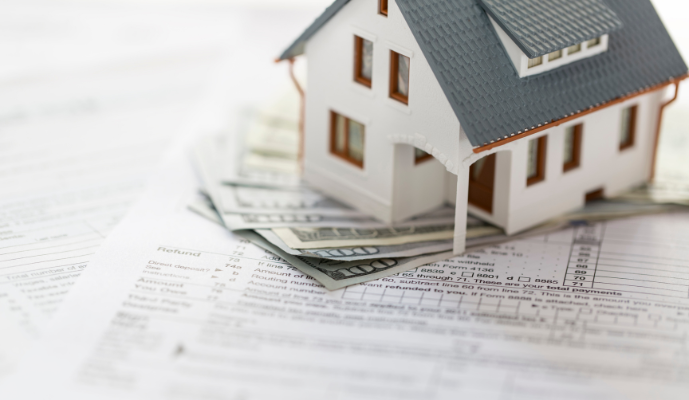Replacing a roof can be a significant home improvement investment, and homeowners often wonder if such an expense may be eligible for tax deductions or credits. This article explores whether roof replacements are tax deductible by examining IRS criteria, how repairs differ from improvements, the value-adding aspect of your roofing project, and options to leverage energy credits. It also discusses how a new roof impacts your home’s cost basis for future capital gains, and special situations such as home offices, rental properties, casualty losses, and medically necessary modifications. With the evolving tax laws—including elements of the Tax Cuts and Jobs Act—understanding these issues has become critical for homeowners looking to maximize their tax benefits while ensuring their property remains secure and energy efficient.
Transitioning from the general importance of roof replacements to their tax implications, this article provides a thorough discussion of roof replacement qualifications, energy credits, IRS regulations, impacts on home cost basis, and special circumstances that may allow for deductions. Homeowners will find valuable, actionable information on how to maintain proper documentation, assess tax credits such as those for Energy Star–rated products, and consult a certified public accountant or tax advisor for personalized advice.
Determining if Your Roof Replacement Qualifies for a Tax Deduction
Understanding whether a roof replacement qualifies for a tax deduction is the first step in planning your home repair and upgrade expenses. The Internal Revenue Service (IRS) distinguishes between routine repairs and improvements that extend the life or value of the property. In determining eligibility, it is essential to examine the nature of the work done. For example, the IRS considers standard maintenance, like fixing a leak due to heat or minor wear, as expenses that are typically deductible as repairs.
Standard Roof Replacements Versus Capital Improvements for Tax Purposes
The first question homeowners must ask is whether their roof replacement is a regular repair or a capital improvement. According to IRS guidelines, regular repairs are generally deductible as current expenses, whereas capital improvements must be added to the home’s cost basis and depreciated over time. A standard roof replacement that follows the natural wear and tear of the roof might be considered a repair if it does not add significant value or extend the overall life of the property. Capital improvements, on the other hand, include modifications that are considered substantial enhancements. For example, installing a new energy-efficient metal roof that promises a longer lifespan and improved insulation may qualify as a capital improvement rather than an immediate expense.
In practice, the differentiator lies in whether the replacement adds new value. If the work is merely restorative—addressing issues like heat, leaks, or deteriorated shingles—the expense might be characterized as routine home maintenance. However, if the project involves modernizing the roofing system with higher quality materials, advanced insulation, or solar panel compatibility, it is more likely to be categorized as a capital improvement. Homeowners should keep detailed records and invoices since the IRS requires robust evidence demonstrating that the repair either maintained the original function of the structure or significantly enhanced it.
How the IRS Views Repairs Versus Improvements for Roof Deductibility
From an IRS perspective, repairs are seen as recurring costs necessary to keep the property in its ordinary efficient operating condition. Improvements, however, are defined as expenditures that prolong the useful life of the property or add substantial value. When evaluating a roof replacement, the IRS examines whether the new roofing material is similar in quality to what existed before or if it upgrades the property to a higher standard. The distinction is critical because while repairs may be deductible in the year they are incurred, improvements become part of the home’s cost basis and are depreciated over a longer period.
For example, if a homeowner spends money to repair a minor leak or replace a few damaged shingles, that expense may be fully deductible in the year of repair. However, if the homeowner opts for a complete overhaul with superior materials that improve energy efficiency and durability, the IRS might classify this expense as a capital improvement. In such cases, the cost is added to the home’s basis, reducing capital gains tax when the property is sold. Understanding these nuances is crucial because it influences how quickly the financial benefit is realized and how subsequent resale values are calculated.
Does Your Roof Replacement Add Value or Prolong Life to Your Home
The key consideration in determining tax deductibility lies in whether the roof replacement adds value or prolongs the life of your home. A cost-effective, standard roof repair might allow you to address immediate issues, such as reducing leaks that can lead to heat loss and water damage. However, if the new roof installation uses energy-efficient materials or contributes to mitigating structural decay—for instance, through increased insulation or corrosion-resistant metal components—it is generally considered an improvement. Such improvements not only offer protection against elements like heat and water leaks but also improve the overall marketability and longevity of the property.
Energy-efficient roofs that meet stringent criteria, such as those endorsed by Energy Star, bring additional benefits. These roofs not only lower utility bills by maintaining a stable indoor temperature but may also qualify for tax credits under certain IRS regulations. Homeowners should assess the new roof’s lifespan, its effectiveness in reducing heat loss, and its contribution to the overall aesthetic and structural integrity of the home. By doing so, they can better determine whether the expense should be treated as a current repair or a future capital improvement that adds to their property’s resale value.
Finding Out if Your Specific Roofing Project Is Tax Deductible
To determine if your specific roof replacement can be claimed as a tax deduction, begin by reviewing the nature of the expense and comparing it against IRS definitions of repairs versus improvements. Consulting with a tax professional, such as a certified public accountant (CPA) or tax advisor, is highly advisable, as they can provide personalized interpretations of current tax law, including any recent updates under the Tax Cuts and Jobs Act. Homeowners should gather all relevant documentation, such as detailed invoices, contractor estimates, and any energy efficiency certification if applicable.
Furthermore, roof replacement projects that incorporate new and innovative materials like metal roofs, solar panels, or advanced waterproof membranes require special consideration. These projects often meet or exceed the threshold for capital improvements because they contribute to enhanced insulation, longer life expectancy, and overall property efficiency. Detailed documentation not only supports your case for deductibility but can also promote a higher cost basis for depreciation when you eventually sell the property. Homeowners should also be mindful of local and state tax laws, which may offer additional incentives for energy-efficient upgrades and environmentally friendly improvements.
When a Roof Replacement Increases Your Property’s Value for Tax Assessment
A roof replacement that qualifies as a capital improvement may increase the assessed value of your property. This increase, however, works in your favor when calculating the adjusted basis for depreciation on a future sale. While a higher assessed value could potentially lead to higher property taxes, it also provides a buffer against capital gains taxes because the increase in cost basis offsets part of the sale proceeds. Therefore, homeowners must weigh the short-term impact on property taxes against the long-term benefits of reduced capital gains tax.
Expense Type
| Expense Type | Description | Impact on Basis | Depreciation Consideration |
|---|---|---|---|
| Routine Repairs | Minor repairs and maintenance expenses | Not added directly | Deducted current year |
| Capital Improvements | Major upgrades that extend life or add value | Added to cost basis | Depreciated over time |
| Energy-Efficient Upgrades | Installations meeting Energy Star standards | Added to cost basis | Potential tax credits apply |
| Casualty Repairs | Repairs due to unforeseen events like storms | May require allocation | Special casualty rules |
| Combined Projects | Projects mixing repairs and improvements | Partial allocation | Mixed treatment |
A comprehensive table like the one above helps clarify the treatment of different roofing expenses, providing homeowners with a quick reference guide to understand their tax implications.
Special Circumstances Where Roof Replacement Can Be Tax Deductible
Certain special circumstances allow roof replacement expenses to qualify for tax deductions in ways that deviate from the standard repair versus improvement dichotomy. Homeowners who use part of their home as a home office, rental property owners, those suffering casualties due to natural disasters, or individuals requiring medically necessary modifications may be eligible for unique tax treatments. These special cases provide additional avenues for maximizing tax benefits by addressing the specific conditions of the homeowner’s situation and the functional use of the property.
Claiming a Roof Replacement Tax Deduction for a Home Office
Home office deductions can extend to certain home improvement expenses, including roof replacements. For homeowners who use a portion of their home exclusively for business purposes, a percentage of the costs associated with a new roof may be deductible. The IRS allows homeowners to allocate the expense based on the proportion of the home that is dedicated to business use. For example, if a home office occupies 15% of the home’s total square footage, up to 15% of the roof replacement expense could potentially be deductible. This deduction applies to improvements that maintain or improve the space, even if the roof replacement is considered a capital expense on the overall property.
Homeowners need to ensure that the home office meets IRS requirements, including regular and exclusive use. Detailed floor plans, records of business usage, and accurate cost allocation methods must be maintained. A study by the Journal of Real Estate Taxation (2020) supports that proper documentation enables homeowners to secure proportional deductions for integrated expenses like roof replacements. This approach benefits business owners by reducing taxable income while maintaining compliance with IRS guidelines.
Consulting a Tax Professional About Your Roof Replacement Deduction
Due to the complexity of IRS regulations regarding roof replacements and home improvements, consulting a tax professional is highly recommended. A certified public accountant (CPA) or a tax advisor with experience in home improvement deductions can provide invaluable guidance on how to properly classify the expense. They can assist in determining what portion of your roof replacement is immediately deductible compared to what must be capitalized and depreciated. Additionally, a tax professional can offer insights into other potential deductions and credits related to energy efficiency improvements that you might otherwise overlook.
By engaging a professional, homeowners can ensure that all documentation is in order and that they maximize the tax benefits available to them. Experts will also provide tailored advice based on current tax laws, which are subject to change, especially with ongoing updates to tax incentive programs such as those under the Tax Cuts and Jobs Act.
Final Thoughts
A thorough understanding of tax regulations is crucial when considering a roof replacement. By accurately distinguishing between repairs and capital improvements, homeowners can maximize potential tax benefits and energy credits. Detailed documentation, professional advice, and compliance with IRS guidelines form the backbone of successful tax planning for home improvements. As tax laws continue to evolve, staying informed and keeping meticulous records will ensure that your home upgrade investments yield both immediate and long-term financial advantages.

